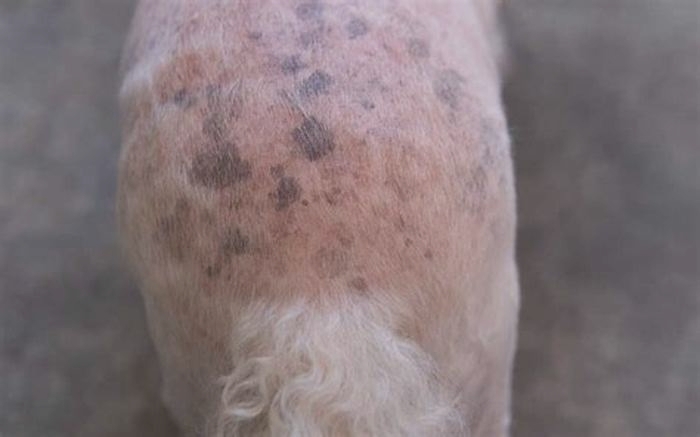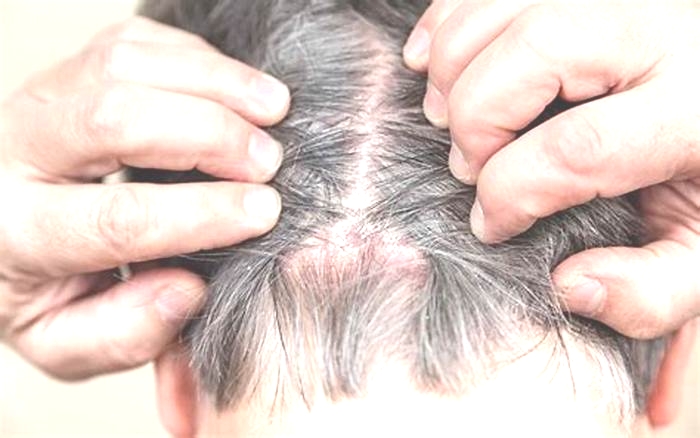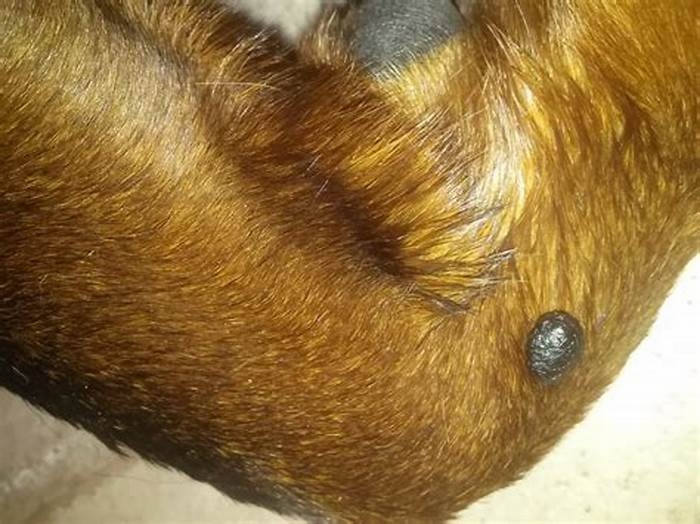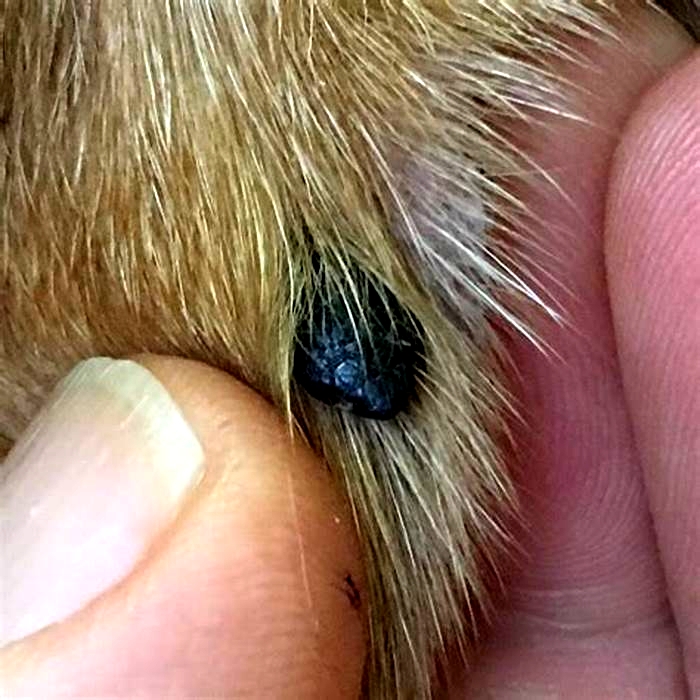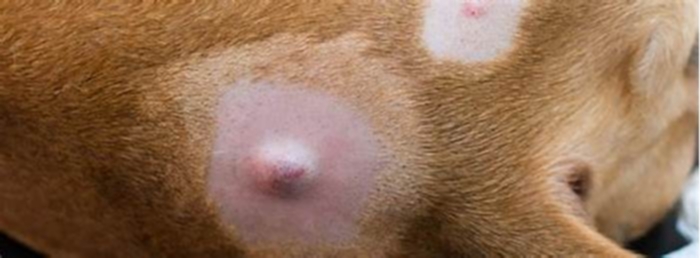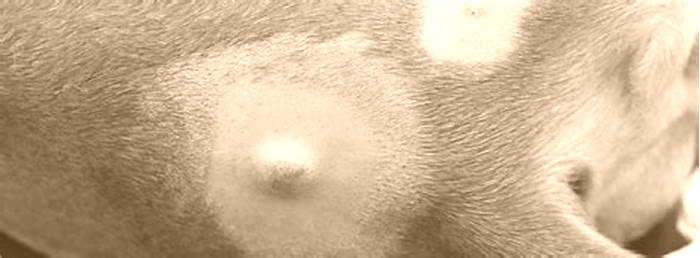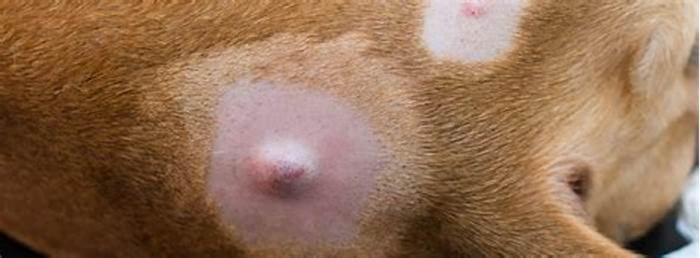Are black moles normal on dogs
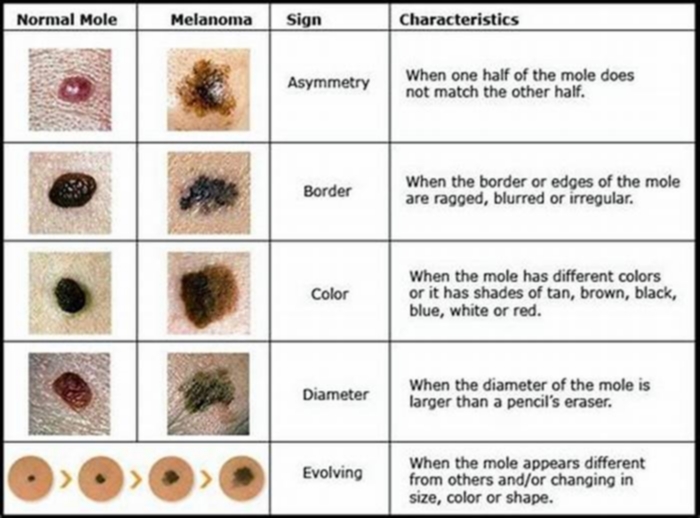
Spotting Moles on Dogs:Signs, Diagnosis, and Treatment
This post may contain affiliate links. If you click and buy we may make a commission, at no additional charge to you. Please see our disclosure policy for more details.
You might have observed some dark spots that may be flat or raised, mostly around the neck, chest, or back of your dogs.
Moles in dogs are common but not as common as in humans. Moles in dogs are generally treated by surgical methods.
Moles in dogs are often harmless, but if there are changes in their size, shape, or any other form, they must be checked by a veterinarian.
You are in the right article if you are worried about your dog having moles or want to know the signs, diagnosis, or treatment.
This read will provide complete information regarding moles in dogs and every need-to-know detail.
Can Dogs get Moles?
Yes, dogs can develop moles, and it is very common, especially for dark-pigmented skin dogs, just as not common as humans.
Most often, they are not harmful, but as in human cases, changes in shape, size, or color in moles can be a sign of some disease and must be checked as soon as possible.
A mole, also called a nevus, is found on dogs body parts that are prone to trauma, such as the neck, chest, or back, especially in older dogs.
Does my Dog have Moles?
Determining if your dog has moles could be tricky. Normal moles do not display significant discomfort and are hard to notice at first.
Moles are different from skin tags. Moles are broad and flat with a dark texture and sizes around a quarter inch in diameter.
They develop in both male and female dogs, although male dogs tend to have them more often than their female counterparts.
Mast cell tumors, carcinoma, and malignant melanoma are three types of cancerous skin lesions that are confused with moles but are not.
Also, ticks are confused with moles due to their similar appearance, and people try to pull that off the dogs skin, thinking it is a tick. Use magnifying equipment to determine, and if unsure, visit a veterinarian.
Ticks have legs out and can be recognized by this, but if you try and pull out a mole thinking its a tick, it will be painful, cause irritation to your dog, and may result in bleeding.
To be cautious, its always wise to get your dog checked to determine if your dog has developed a mole or something else, as things looking like a mole can be a cancerous tumor.
Why do Moles Grow in Pets?
There seems to be no exact reason why moles and other similar diseases like skin tag develops in dogs, but there are some factors that may lead to these skin irregularities. They are:
Genetic
The easiest way for your dog to develop moles is through genetics. These moles or skin issues generally run in the family, and some dogs are more prone to get this than other breeds.
Check-ups and tests prior to adoption can show if the dog has been exposed to some diseases or irregularities. Breeds like Golden Retrievers, Irish Setters Dobermans are some dogs who tend to develop mole more often.
Medicinal Side Effects
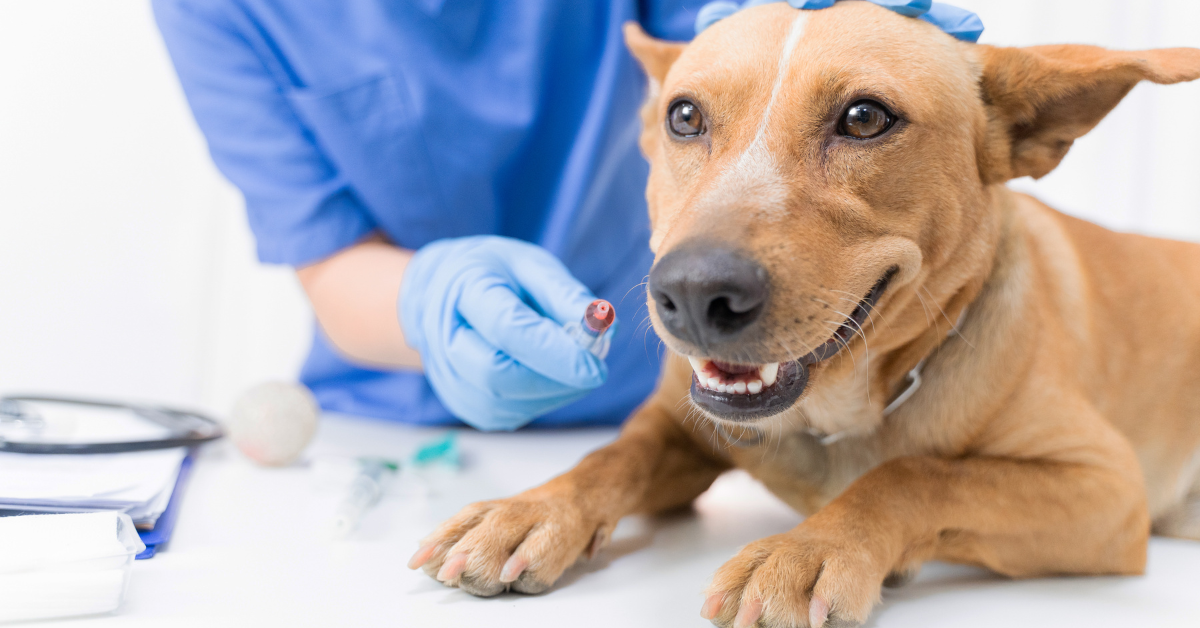
Some medicines have side effects that can lead to skin infections, moles, skin tags, and other irregularities.
Age Factor
Age is also a factor, as older dogs tend to get moles more often than small dogs. Moles develop from the age of 5 to 11 years.
How do I Treat my Dogs Moles?
The benign moles are often harmless and do not require much treatment until the dog is feeling discomfort or the moles start changing their size or shape.
If the vet feels the need to treat the mole or it occurs to be a fatal disease like cancerous, then the mole can be removed surgically by giving just anesthesia or painlessly frozen by cryosurgery.
After surgery, your dog can get back to a regular routine. Dogs might need an e-collar around their neck or the surgical area to prevent them from scratching or licking the surgical wound.
Are Moles Similar in Dogs and Humans?
Moles are mostly similar in all species, be they animals or humans. Dog moles are very similar to humans.
Most moles appear early in a persons life, meaning that animals with shorter lifespans will typically develop their moles in the same space of time that humans do.
In canines, moles growth has melanin in a higher concentration level around the surrounding tissue, making the color of the mole darker.
Moles in both humans and animals can turn out to be cancerous, and any irregularities should be brought to medical attention without delay.
FAQs
Q. When should my dog see a vet for a mole?A: If a mole is changing its shape, size, or color, then you should see a veterinarian. If the mole is in a place that bothers the dog, you can remove it easily.
Q. Is it OK for dogs to have moles?Yes, it is totally okay for dogs to have moles. Moles in dogs generally appear in the chest, face, or back of the body.It is mainly unharmful, and it is up to you if you want to remove it.
Q. How do you stop a mole from bleeding on a dog?To stop the bleeding, take a clean towel or cotton cloth and apply pressure on the mole. When the bleeding stops, clean it with mildly warm water.Stopping the bleeding also depends on the type of wound; minor cuts can be stopped by applying pressure. Big cuts will take time; while applying pressure, take the dog to a veterinarian.Bleeding from moles can happen if your dog has scratched or bitten the mole or a cut from sharp objects.
Conclusion
Your canine partner can develop moles, which are very common and harmless. This article provided information about the signs, diagnosis, and treatment of moles in dogs.
We hope reading this article clears your doubt about why dogs have moles, how you can treat them, and whether it is dangerous or not.
If your dog develops a mole, check them frequently and take them to a veterinarian if any changes take place in moles.
Till then, take care and happy petting.
[wpdatatable id=68 responsive= stack responsive_breakpoint=phone/]
Dr. Lillian is a D.V.M. passionate about promoting awareness of dogs. She shares her expertise through her blogs on canineweekly.com and provides animal care services, including internal medicine, dermatology, and emergency care. Dr. Lillian is committed to contributing to animal welfare.
Cancerous Moles on Dogs
Cancerous moles may develop on the surface of the skin. Skin cancer is more common in senior dogs and dogs that have light colored coats. The moles may occur due to an uncontrollable development of cells. Not all moles are cancerous, but your dog should be checked by a specialist if he has any moles or abnormal skin growths.
Moles on Dogs
Moles on dogs may be benign or malignant and develop due to an abnormal division and multiplication of the cells. The division and multiplication of cells is controlled by the genes in the nucleus of cells. However, there may be some external factors that could influence the abnormal growth of skin cells.
Appearance of Canine Cancerous Moles
Moles are hard lumps and in dogs, they are typically dark in color. The moles may be present on any area of the dogs skin. Many dogs have moles, but not all of these are cancerous. Typically, moles that grow at a fast rate are cancerous. There are a few means that you could suspect the moles on your pet are cancerous:
- Cancerous moles are dark and grow on skin areas with hair (the color of the moles may change)
- The moles may have various sizes, but the edges are irregular
- Are raised and may bleed occasionally, as there are many blood vessels in the area
Benign moles may sometimes look like cancerous ones, so its always a good idea to have a veterinary checkup and have a clear diagnosis.
Types of Cancerous Moles on Dogs
There are several types of cancerous moles including:
- Melanoma, which is made up of malignant cells that typically develop in an older mole and affects certain breeds more often: Cocker Spaniels, Scottish Terrier and Boston Terriers.
- Sebaceous adenomas, which are lumps affecting the sebaceous glands. These moles are light in color and are smaller. Cocker Spaniels seem to be more often affected by this type of skin cancer
- Skin carcinomas have the appearance of cauliflower and are most frequently located on feet and legs
- Mast cell tumors, which often affect the legs or the abdominal area. This type of cancer is more common in Boxers
Diagnosing Cancerous Moles
A sample of cells is required to be biopsied to see if the mole is benign or malignant. The pathologist can establish the type of cancer and the stage of the cancer.
Other tests are needed if the cancer is suspected to be in a more advanced stage and it is present in neighboring lymph nodes or other organs.
Treatment Options for Cancerous Moles
Cancerous moles on dogs may be fully treated, but a timely detection is essential. Surgical excision is possible in the early stages of the disease and in some dogs, the moles will not be recurrent. If the cancer affects other organs, surgery is not an effective course of treatment and chemotherapy will be recommended.
Related Links:
Moles on Dogs: A Complete Guide
The information is current and up-to-date in accordance with the latest veterinarian research.
Learn moreAt some point in your life, youve probably looked down at your skin and noticed the appearance of a mole. Moles are fairly common in humans, and though they are mostly harmless, they can occasionally be a sign of cancer. If youre a dog parent, you might have found a spot on your pet that resembles a mole. But do dogs get moles?
They do. Dogs developing moles are less common than humans, but it can occur. And as with people, most of the time, these moles are benign. However, there may be cases where a dog has a mole that isnt harmless or where what youre looking at isnt a mole. Heres what you need to know about moles on dogs.

What Are Moles?
First off, you should understand exactly what a mole is. A mole, or melanocytic nevus, on canines is typically a well defined, slightly raised lesion that is brown in color. Occasionally, the mole can displace hair follicles, leaving the area where the mole is hairless. The skin around the mole shouldnt be red and inflamed and once youve discovered it, the mole shouldnt change too much in appearance.
In most instances, moles will be benign, but rarely, they will not be. Any sudden changes in size, color or texture can be a cause for concern. There are also a few other things that can first look like moles on a dog but arent that could be less benign.
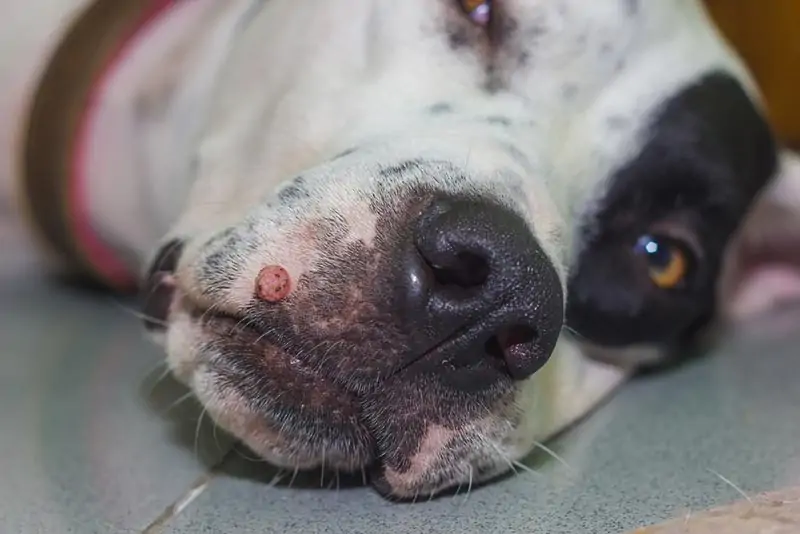

If It Isnt a Mole, What Is It?
Say youve found a spot on your pup that looks like a mole; how do you know for sure that it is? Other things can look like moles at first glancesome harmless, some not. In most cases, youll need to check with your pets vet to find out if it is indeed a mole or something else. However, here are some of the more common things that can also look like moles on dogs.
1. Ticks
If you think you see a mole on your dog, you may want to check closely to make sure it isnt a tick. Sometimes, if you are just having a cursory look at your pup, a tick can look very much like a mole. It makes sense, as a tick would look like a darker, slightly raised spot on your pup. However, if you look closer, you should be able to see the legs if its a tick. Also, be sure to take a good look if you think youve located a tick on your canine pal; if it ends up being a mole, your dog is not going to be happy about you trying to remove it!
2. Skin Tags
Have an older dog? Then, youre likely familiar with skin tags. Skin tags grow from the skin and can begin to dangle if they get large enough. Though any dog can have them, theyre more common in senior dogs. Theyll show up around the face, ankles, and elbows, and when they first start growing, they can sometimes resemble a mole. Skin tags are benign growths that dont hurt your dog but can sometimes need to be removed if your dog keeps catching them.
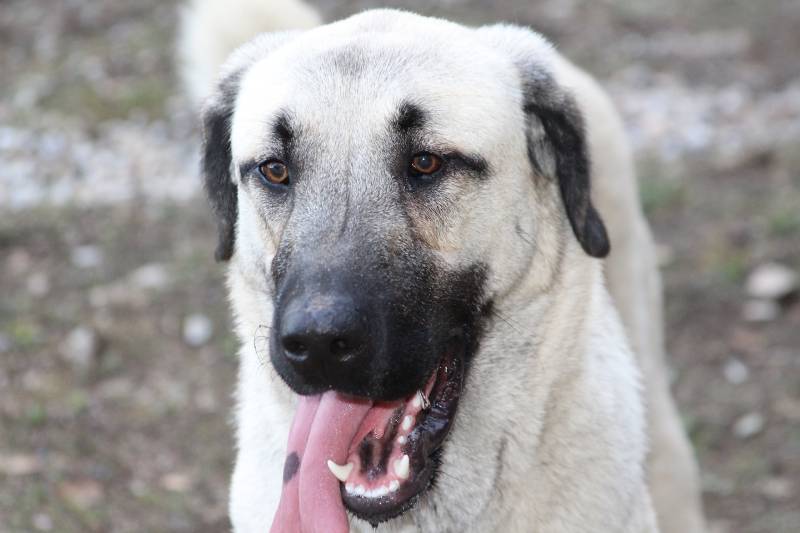
3. Sebaceous Cysts
Sebaceous cysts can also look similar to moles at first, as they are raised bumps that sometimes have a bluish tint, making them appear darker than the skin around them. These cysts come from the sebaceous gland, which is responsible for secreting sebum, or the oil that helps keep your pups skin and coat healthy. These cysts are another benign occurrence, though they can rupture on occasion.
4. Hemangiomas
Hemangiomas might also look like a mole at first glance. Hemangiomas, or vascular tumors, are circular lumps that appear reddish-black in color. They, too, are benign and can be found on a dogs legs. This doesnt mean hemangiomas cant cause issues, but they arent cancerous.
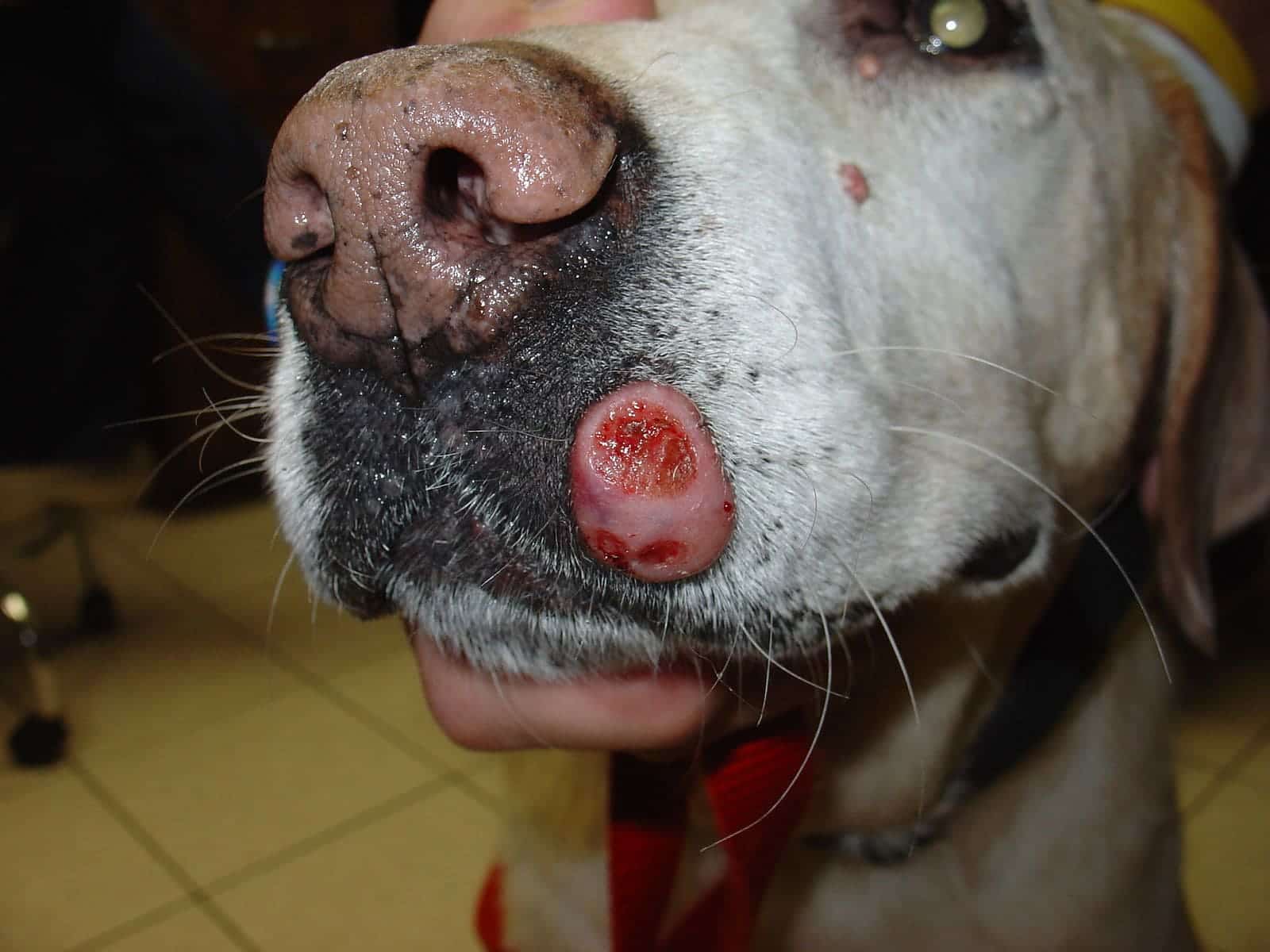
5. Basal Cell Tumors
Then, there are basal cell tumors. Dont let the name frighten you; these are almost always benign. This isnt always the case (so you definitely want to have your vet check things out), but most often, basal cell tumors are benign. These tumors usually show up on the head, neck, and legs and can be dark in color. They are also raised and firm to the touch.
6. Mast Cell Tumors
Mast cell tumors can have a variety of appearances and might look like moles when they first show up, but theyll usually quickly stop looking like this once they start to grow. Unlike the above skin issues, mast cell tumors are cancerous. They can spread quickly and should be treated immediately.
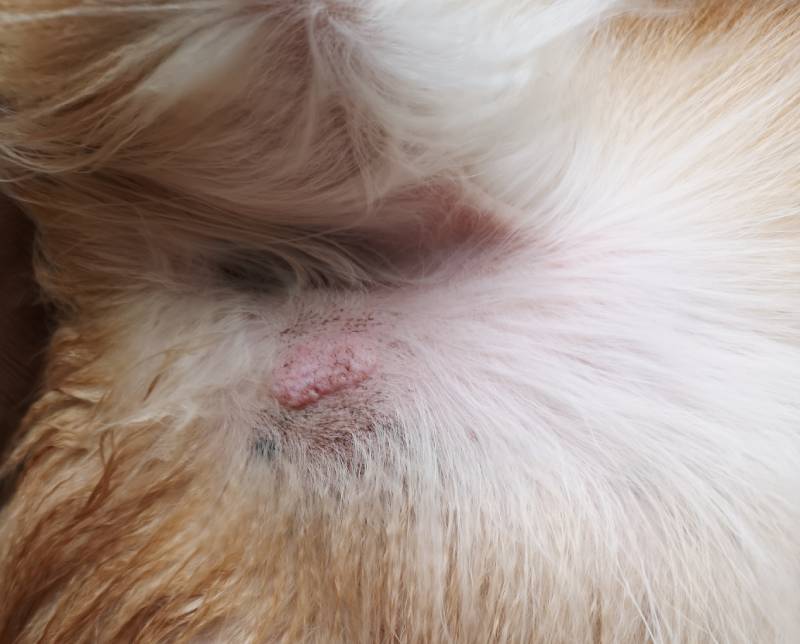
7. Melanomas
Like humans, dogs can also get melanomas. Unlike in people, benign melanomas (also called melanocytomas) are diagnosed in dogs most frequently. However, this isnt always the case. Aggressive malignant melanomas can occur, most commonly around the lips, mouth and nails beds. Melanomas appear as small black or brown masses and should be checked by a vet to ensure they are, indeed, benign.

What Should I Do if I Think My Dog Has a Mole?
If you find a spot on your dog that you believe is a mole, you should have your vet check out. Any time you find any sort of skin growth on your pet that is brand new, it should be looked at by a veterinarian. As you saw, many things can look like moles, but some may not be moles, and some arent benign.
When your vet examines the potential mole, they might decide to take a sample so they can test it to be sure its benign. This sample will most likely be done in the form of a fine needle aspirate, which simply means theyll stick a needle into the potential mole and draw out cells that can be sent off for analysis. Once the analysis is complete, your vet will better understand what exactly the skin growth is and whether it needs to be treated.
Even if your vet says its merely a mole, keeping an eye on the area is always a good idea. If you see that the mole has changed in size, color, or texture, there could be something less benign going on. And if you notice that the mole is inflamed or bleeding, you absolutely want to have it checked out.

Conclusion
Dogs can get moles, and in most cases, its no cause for concern. However, your dog may have a skin growth that looks like a mole but actually isnt. While in many cases, skin growths that resemble moles are also benign, this isnt the case for all of them. So, if you find a mole or any other sort of skin growth on your pup, you should have your vet examine it so they can ensure that it is harmless.
Featured Image Credit: AT Bea, Shutterstock

